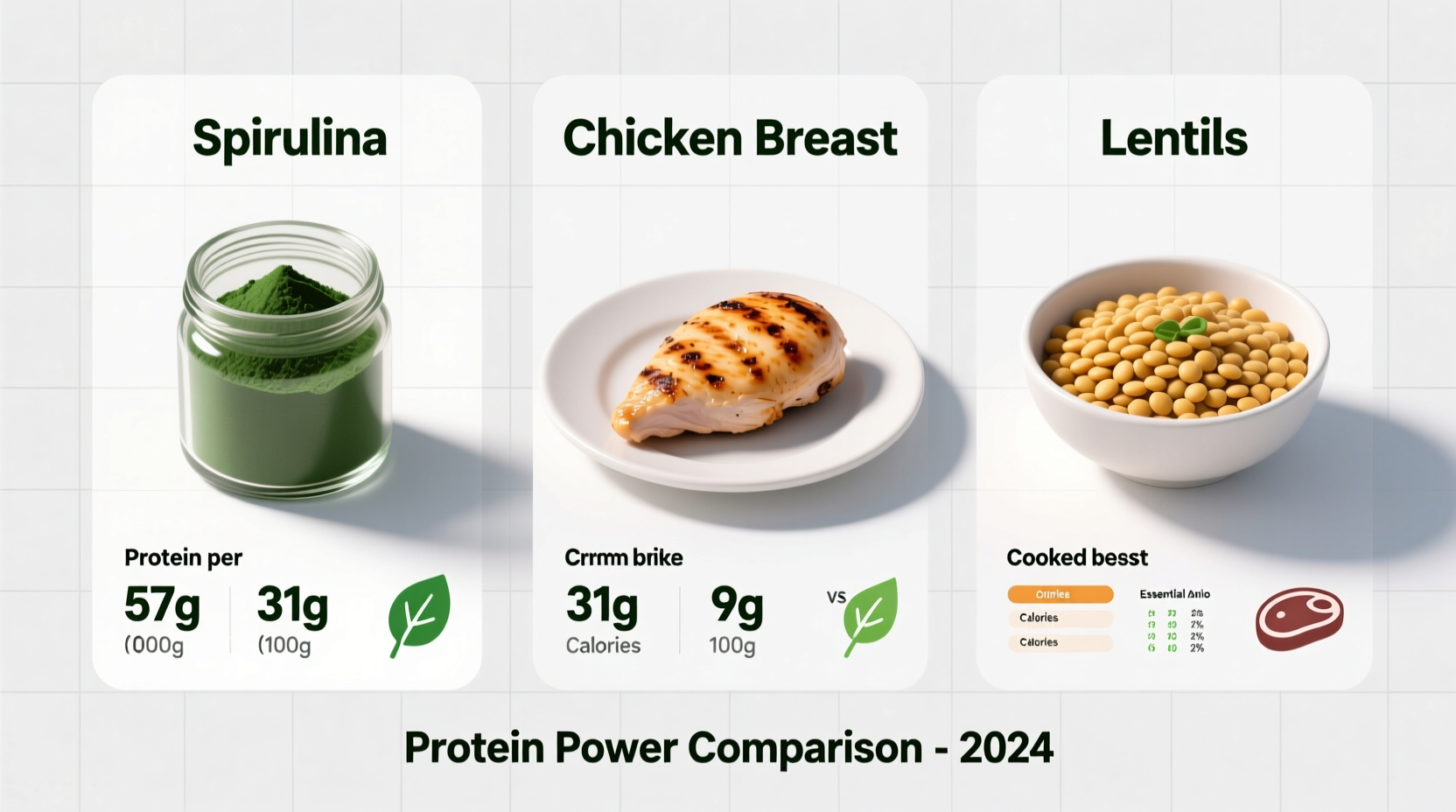Discover which foods deliver the most protein per serving and how to incorporate them effectively into your diet. This science-backed guide cuts through protein myths with verified data from nutritional science authorities, helping you make informed choices whether you're an athlete, managing dietary restrictions, or simply optimizing your nutrition.
Understanding Protein Metrics: Beyond Simple Rankings
When evaluating "highest protein" foods, three critical metrics determine true nutritional value:
- Protein density (grams per 100g) - Raw protein content
- Protein quality (PDCAAS/DIAAS scores) - Bioavailability and amino acid profile
- Nutrient synergy - Additional vitamins, minerals, and health compounds
Many sources misleadingly cite protein isolate powders as "highest protein" options. While whey isolate contains 80-90g protein per 100g, it lacks the micronutrients and fiber found in whole foods. The USDA FoodData Central database confirms that among minimally processed whole foods, dried spirulina leads with 57g protein per 100g while providing complete protein status and exceptional nutrient density (USDA FoodData Central).
| Food | Protein (g/100g) | Complete Protein | PDCAAS Score |
|---|---|---|---|
| Dried spirulina | 57 | Yes | 0.84 |
| Beef jerky | 40-50 | Yes | 1.0 |
| Edamame | 36 | No | 0.91 |
| Chicken breast | 31 | Yes | 1.0 |
| Lentils | 9 | No | 0.7 |
Top Protein Sources: Whole Foods vs. Supplements

Animal-Based Powerhouses
Eggs, chicken breast, and fish deliver complete proteins with perfect PDCAAS scores of 1.0. The National Institutes of Health confirms that animal proteins generally provide superior amino acid profiles for muscle synthesis (NIH Protein Requirements). However, they often contain saturated fats requiring mindful portion control.
Plant-Based Champions
Spirulina stands out as the only plant food with complete protein status among top contenders. Soy products like edamame and tempeh follow closely. The Academy of Nutrition and Dietetics verifies that strategic plant protein combinations (like rice and beans) can deliver complete amino acid profiles for vegetarians (AND Position Paper).
Practical Protein Integration Guide
Your actual protein needs depend on activity level and health goals. The Recommended Dietary Allowance (RDA) suggests 0.8g per kg of body weight, but athletes may require 1.2-2.0g/kg according to ISSN research. Consuming more than 30-40g protein per meal provides diminishing returns as the body can't effectively utilize excess.
Avoid These Common Protein Mistakes
- Mistake: Prioritizing quantity over quality
- Solution: Choose foods with high PDCAAS scores alongside protein content
- Mistake: Neglecting protein timing
- Solution: Distribute protein intake evenly across meals (20-40g per serving)
- Mistake: Overlooking complementary proteins
- Solution: Combine grains with legumes for complete plant-based profiles
Special Considerations for Different Diets
For athletes: Prioritize fast-digesting proteins like whey or egg whites post-workout. The International Society of Sports Nutrition recommends 20-40g within 45 minutes of training.
For vegetarians: Focus on spirulina, soy products, and quinoa while combining complementary proteins throughout the day. Spirulina's exceptional nutrient density makes it particularly valuable for plant-based diets.
For weight management: High-protein foods increase satiety. Research shows protein-rich breakfasts reduce daily calorie intake by 13% compared to carb-heavy options.
Protein Quality Over Time: Scientific Evolution
Nutritional science has evolved significantly in protein evaluation. The Protein Digestibility Corrected Amino Acid Score (PDCAAS) system dominated from 1993 until 2014, when the Digestible Indispensable Amino Acid Score (DIAAS) emerged as a more accurate measurement. This timeline shows key developments:
- 1991: FAO introduces PDCAAS as standard protein quality metric
- 2013: Research reveals PDCAAS overestimates certain plant proteins
- 2014: FAO adopts DIAAS for more precise amino acid bioavailability measurement
- 2021: Updated dietary guidelines incorporate DIAAS data for protein recommendations
Contextual Limitations of High-Protein Foods
While spirulina leads in protein density, practical consumption limitations exist. Most people consume only 1-2 tablespoons (7-14g) daily due to its strong flavor. Context matters when selecting protein sources:
- Allergies: Whey and soy top allergen lists – consider alternatives like pea protein
- Kidney health: Those with renal issues should consult doctors before increasing protein
- Digestibility: Some plant proteins cause bloating – soak beans thoroughly or choose fermented options
- Environmental impact: Beef has high protein but significant carbon footprint compared to plant options
Maximizing Your Protein Strategy
The highest protein food depends on your specific needs and context. For most people, a diverse protein portfolio delivers better results than focusing on a single "top" source. Combine animal and plant proteins strategically throughout your day, prioritizing whole foods over processed supplements whenever possible. Remember that protein quality, timing, and overall dietary pattern matter more than chasing the absolute highest number on a protein chart.











 浙公网安备
33010002000092号
浙公网安备
33010002000092号 浙B2-20120091-4
浙B2-20120091-4